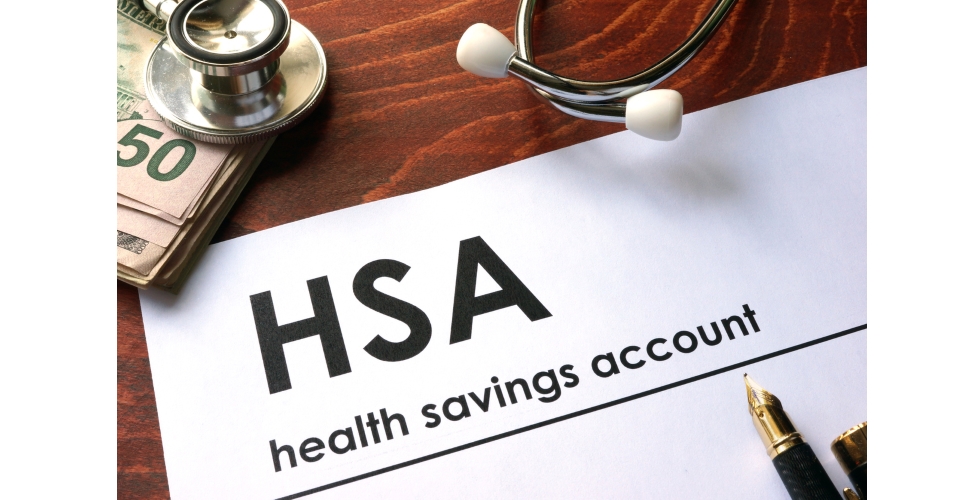
Our Editors independently research, test, and rate what we feel are the best products. We use affiliate links and may receive a small commission on purchases.
Amazon has rapidly taken over the past few years; so much so that it leaves us wondering if there’s anything they haven’t covered. Well, that question has been answered with the company delving even deeper into the health care world.
Amazon recently announced in March 2019, that customers can now pay for medical-related expenses that would otherwise be out-of-pocket for them.
How are they doing this?
By accepting Health Savings Accounts (HSAs) and Flexible Savings Accounts (FSAs), providing discounts from countless health items, from glucometers to cold medicine.
Keep in mind that as over-the-counter medication requires a prescription for it to fall under HSA or FSA coverage, this isn’t currently supported by Amazon. However, they did recently acquire online pharmacy, PillPack, last year.

What Exactly Do These Programs Do?
Both HSA and FSA allow those covered by health insurance to give a part of their income, before taxes, to cover medical expenses that would otherwise be considered out-of-pocket or “qualified expenses”.
These qualified expenses include deductibles, copayments, and coinsurance, but also tangible items like monthly prescriptions or insulin pens.
In certain situations, employers will also contribute to these accounts. You may be given a debit card attached to this account to pay for said expenses. Let’s go more into detail with each one, below.
HSAs
These days, it’s quite common for health insurance providers to offer HSAs, but if yours doesn’t, you can open up an individual account on your own. Every year, you get to determine how much you’d like to put in towards your HSA account.
However, you should know that you cannot go over government-mandated limits. As of 2019, the limit is $3,500 for individuals, and $7,000 for families. If you’re over 55 years old, you get $1,000 more.
If you have the ability to get an HSA through your employer, you can opt to have these contributions automatically taken out of your paycheck, which somehow makes it easier as you will never see that money on your paystub.
For further convenience, you’ll receive a debit card linked to your account and use it for eligible medical expenses. What’s really great about having an HSA, is that if you don’t use the entire balance, it rolls over into the next year, so you’re never losing anything.
Keep in mind that once you turn 65 and are enrolled in Medicare, you can’t put money into an HSA, but can still use it for qualified expenses.
Tax Benefits
Everyone loves finding out ways of getting more back or paying less in taxes. With HSAs, there are three main advantages.
- Contributions are pre-tax/tax deductible
- This money grows tax-free
- Money can be withdrawn tax-free
This essentially means that you will not pay taxes if the account grows, and can be taken out for qualified expenses without having to pay tax on it. It will be as if you just made less money for that year. For example, if you made $60,000 in a year and put in $3,500, it will come out like you made $56,500.
Investments with HSAs
Another benefit, is that you can invest these in stocks, mutual funds, and other investment tools to help make more money for yourself.
As there are no minimum required distributions at 70 ½ like with other retirement accounts, you have a lot more flexibility. In fact, some experts declare it may even be smarter to put money towards an HSA as opposed to a 401(k) or IRA without matching.
Why?
Your 401(k) and IRA contributions may not be subject to state and federal taxes, but they aren’t able to skate by FICA (Federal insurance Contributions Act) taxes. In contrast, if you opt for HSA payroll deductions, they are not subject to FICA.
HSA Exceptions
- Long Term Care insurance premiums
- Medicare Part A or B, Medicare HMO, and employer-sponsored retiree health insurance premiums
- COBRA premiums
- Premiums for a health plan during a period where they are receiving unemployment
FSAs
FSA enrollment is generally only available when there’s an open enrollment period happening (usually towards the end of the year) or if you’re changing employers.
Keep in mind that you’re not allowed to alter the amount you’ll contribute each month, unless your financial status changes, or there’s a change in your family, such as a birth, marriage, etc. or change in insurance coverage.

85% of large employers currently offer a healthcare FSA, which is obviously quite substantial. However, as of 2011, studies showed only about a quarter of eligible participants actually enrolled.
While it can be a big help if you spend a lot on healthcare, know that if you contribute more than you use, you won’t get that money back. It essentially disappears to never be seen again.
However, employers can choose to make sure their employees don’t lose any leftovers and can either carry them over to the next year (up to $500), or add on a grace period for up to 2.5 months.
This rule has really limited the popularity of the program, making it challenging for people to be able to estimate their upcoming year’s out-of-pocket expenses.
What can it be used on?
Dental care, vision care, co-payments, coinsurance, deductibles, prescription medications, and other medical expenses. For these expenses, you’ll have a debit card, or for the more complicated method, can choose to submit receipts to be reimbursed.
Tax Benefits
An FSA ultimately saves you money, as it essentially reduces your income taxes. Similar to a 401(k) retirement plan, the account is funded through salary deferrals in pre-tax money.
The money you put into your FSA is deducted from your salary before your Federal, State, or Social Security taxes are calculated which means you can’t claim a tax deduction on this money. At the beginning of each year, you get to choose how much you contribute.
The limit for 2019 is $2,700 or $5,000 per household, and the amount you decide on will be taken out of each paycheck in equal installments, then directed into your FSA account. So if, for example, your annual income tax rate is 20%, enrolling will save you $20 for every $100 you contribute. Those are pretty amazing rates.
Due to the fact that if you don’t use it, you lose it at the end of the year, it’s important to try and calculate how much you’ll roughly need to contribute. Start writing down how much you realistically expect to spend on out-of-pocket expenses for you and your household for the upcoming year.
In these cases, it’s better to be more on the frugal than excessive side so as not to lose any money unnecessarily. At the very least, make sure to keep track of how much you have in your FSA, making sure to use as much as you can before the deadline hits.
If you’re close to the deadline, there are many over-the-counter products that are commonly-used and covered under Amazon FSA. Just make sure not to stockpile unreasonably.
Differences Between an HSA and FSA
There are many notable differences between the two accounts, and it’s important to know what they are if you’re planning on opting into one. That’s right, just one, as you can’t elect to have both, unless the FSA is categorized as a “limited purpose” account. These are just like your normal FSAs, but are only for vision and dental care.
| HSA | FSA | |
| Eligibility Requirements | These include being part of a high-deductible health plan (HDHP) | None |
| Contribution Limit | $3,500 for individuals, and $7,000 for families (as of 2019) | $2,700 (as of 2019) |
| Rollover | Whatever goes unused can be rolled over to the next year | Typically, any unused money is forfeited, with certain exceptions |
| Changing Contribution Amount | You can choose to alter your contributions at any point | You can only change your amounts during open enrollment, a change in employment, or family status |
| Employer | Even if you change employers, your HSA goes with you | If you change employers, your FSA is typically goes to go away. There is an exception, which is if you’re eligible to keep FSA through COBRA |
| Taxes | Contributions are tax-deductible, and also withdrawn from your salary pre-tax. Any growth and distribution is also free of taxes. | Contributions are pre-tax, but distributions are untaxed. |
Qualified Medical Expenses
Remember we mentioned up above that term “qualified medical expenses”? These are essentially the HSA and FSA eligible items Amazon covers. If you want to use an HSA or FSA card on Amazon, it’s important to know what you’ll be able to purchase. Let’s get into each one.

HSA Coverage
Amazon HSA coverage is quite substantial, however, the expenses covered must be focused on either reducing the effects or preventing a physical/mental defect or illness. Thankfully, this also includes dental and vision care.
- Services: Acupuncture, Optometrist visits, Health Institute visits, Osteopath visits, your annual physical exam, home care, home improvements (related to making life easier due to a physical/mental defect or illness), hospital services, psychiatric care, homes for intellectually/developmentally disabled, psychologists, body scans, special education, lead-based paint removal, stop-smoking programs, chiropractor visits, lodging, therapy, long-term care, dental treatments, nursing home, nursing services, drug addiction, x-rays, guide dog/service animal, fertility enhancement, eye exams, health-related expenses for adoptive parents
- Fees: Founder’s Fee, Health Maintenance Organization (HMO), Insurance Premiums, Lab Fees, Legal Fees, Capital Expenses, Lifetime Care – Advance Payments, Long-Term Care, Medical Information Plan, Disabled Dependent Care Expenses, Lactation Expenses
- Surgery: Organ donors, breast reconstruction surgery, Sterilization, Transplants, Vasectomy, Vision Correction Surgery, Eye Surgery, operations/surgeries
- Products: Eyeglasses, wheelchairs, wigs, oxygen, hearing aids, artificial limbs, prosthesis, pregnancy test kit, artificial teeth, bandages, birth control pills, Braille books and magazines, breast pumps and supplies, cars, telephones, televisions, contact lenses, meals, crutches, medicines
HSA Ineligible Expenses
- Services: Babysitting, childcare, diaper services, household help, dancing, swimming lessons, health club dues, adoption, age management systems, driving lessons, massage therapy for general well-being, pastoral counseling, personal training sessions, physical therapy for general well-being
- Fees: Health Coverage Tax Credit, Medical Savings Account, Insurance Premiums, annual medical contract fees for exclusive provider care, domestic help fees, finance charges, interest, late fees, lens replacement insurance, union fees, warranties
- Surgeries/Procedures: Hair transplant, teeth whitening, illegal operations and procedures, electrolysis or hair removal, cosmetic surgery, spider vein therapy, ultrasound/4D/elective
- Products: Controlled substances, medicines or drugs from other countries, non-prescription drugs and medicines, nutritional supplements, personal use items, maternity clothes, clothing in general, marijuana (even if prescribed for medicinal purposes), medicine flavorings, pill bags or boxes, postage, pre-seed moisturizers, remineralization products, saddle soap, non-medicated shampoo, tanning lotions without sun protection, weight loss machines, daily multivitamins, vitamins for general well-being
FSA Coverage
You’ll find some similarities here between HSA coverage, with some notable differences as well. The following qualifies under Amazon FSA spending:
- Services: Acupuncture, Alcoholism/Drug Addiction treatment, ambulance services, annual physical exams, body scans, chiropractor visits, most dental treatments, disabled dependent expenses for medical care, eye exams, eye surgery, fertility treatments, home for the intellectually/developmentally disabled, hospital services (including meals/lodging), lab fees, lead-based paint removal, long-term care/services, nursing home and services, organ transplants, psychiatric care, psychoanalysis, special education, therapy, transportation expenses for medical treatments, weight loss programs, x-rays, breast reconstruction surgery
- Products: Wheelchairs, vehicular expenses for disabled persons, wigs, smoking cessation products and treatments, artificial teeth, bandages, birth control/contraceptive devices, Braille reading material, breast feeding supplies/lactation expenses, capital expenses, communication equipment for the deaf or speech impaired, contract lenses, eyeglasses, copays, co-insurance, deductibles, crutches, diagnostic devices, guide dog/service animals, hearing aid expenses, medical conference expenses, oxygen, oxygen equipment, pregnancy test kits, prescription drugs and medicine (excluding insulin), prosthesis, artificial limbs
FSA Ineligible Services
In this case, these are the same as HSA ineligible services.
Medical Equipment
First, it’s important to know how medical equipment is classified. These are eligible both over-the-counter and with a prescription. It’s important to note that with an FSA, HSA, and health reimbursement arrangement (HRA), that no prescription is required.
Medical equipment covers quite a bit of different items made to be used by those treating, preventing, curing, mitigating, or monitoring the status of a medical condition.
While some are directly related to the care and prevention of these medical conditions, there are others which are not in the case of using FSA cards on Amazon. For this reason, the IRS has deemed them unnecessary to maintain “general health”.
These are including but not limited to: fitness tracking devices, electric toothbrushes, and in general, more cosmetic-related.
Prescription or Not?
With Amazon HSA, you must know what is going to require a prescription to be eligible or not. Below, you’ll find a comprehensive list of both so you know how to use HSA on Amazon.
No Prescription Necessary
- Athletics: Athletic braces and supports, bandages, first aid kits, heating pads and wraps, hot and cold packs
- Feet/Ambulatory Products: Wheelchairs and accessories, walking aids, shoe insoles and inserts, orthopedic and surgical supports
- Pregnancy and Fertility: Pregnancy and fertility tests, prenatal vitamins, condoms, breast pumps and accessories
- Children: Baby sunscreen, baby thermometers, children’s first aid, children’s sunscreen, sunscreen
- Vision and Hearing: Contact lens solution, eye glass and lens accessories, hearing aid batteries, reading glasses and magnifiers
- Blood: Blood glucose monitors and test strips, blood pressure monitors, diabetes care accessories, glucosamine supplements, glucose tablets
- Others: Vaporizers and inhalers, thermometers, denture cream and cleansers, home medical equipment, incontinence products, lip balm, medical monitoring and testing devices, motion sickness aids, nasal spray
Prescription Necessary
- Skin: Acne treatments, anti-fungal treatments, anti-itch treatments, antiparasitic and lice treatments, cold sore treatments, corn and callus removers, skin treatments, topical skin treatments, wart removers
- Digestive System: Laxatives, stomach and digestive aids, antacid and acid controllers
- Children: Children’s cold and allergy medicine, children’s fever and pain medicine, children’s stomach and digestive aids, diaper rash cream, aspirin and baby aspirin
- Pain Management: Pain relievers, external pain relievers, oral pain remedies, pain relieving creams and pads
- Other: Allergy medicine, chest rubs, cough drops and spray, cough, cold, and flu medicine, ear drops and wax removers, eye drops, feminine personal care treatments, hemorrhoidal treatments, nasal spray, nicotine gum and patches
HSA or FSA: Which Should You Choose?
It may seem difficult to know which one to choose, as both feature benefits that can ultimately save you money or at least make managing these expenses easier. However, if you are eligible for HSA, we recommend opting in.
Why?
The contribution limits are higher, and if you don’t use up all of your contributions, they carry over from year-to-year. If you don’t qualify, though, we highly recommend joining up FSA. Again, if you’re unsure about how much you’ll use, start adding up costs. Start with your deductible, what you expect to spend on medication, doctor’s visits, and planned treatments or operations.
If you’re 65 or older, remember that you can’t deduct health insurance premiums with an HAS, but you can with an FSA. If you do not have health insurance, you are still eligible to take part in an FSA program, which makes it much more attractive to many.
The Future
While Amazon FSA spending and HSA spending is certainly a huge step in the right direction, many potential customers would like to see the addition of pharmacy services. Right now, Walmart is their biggest rival in this aspect, including a storefront for HSA and FSA products.
As mentioned previously, they did recently acquire PillPack, which could mean they have future plans to add in prescription medicine to their marketplace. While prescription drugs is a difficult ground to navigate due to the communication between manufacturers and pharmacies, they can surely find a way to make it work. The HSA/FSA store Amazon has provided has opened up many doors for people, and this is only the beginning.
Summary
What’s really great about there now being Amazon flex account eligibility is that it kind of takes the guesswork out of shopping for Amazon FSA eligible or HSA eligible items. What they’ve done is given consumers a wide array of products that fall under their standards with brand names that we all use and know are reliable.
While not all of us use Alexa, those that due may find that managing their chronic diseases or just maintaining a good level of wellness is so much easier and streamlined now. There’s no having to drive down to the pharmacy or rely on someone else to pick up medicine or products to live their life.
While they haven’t quite yet announced the transition into the prescription market, the ability to now use HSA on Amazon or use FSA has really made things more affordable and convenient. We encourage you to go check out their marketplace, now offering thousands of FSA and HSA eligible products from all kinds of categories.
Notice:
HealthWellness365 is a participant in the Amazon Services LLC Associates Program, an affiliate advertising program. HealthWellness365 earns fees from products sold through qualifying purchases by linking to Amazon.com. Amazon offers a commission on products sold through their affiliate links.In March 2019 Amazon announced that Health Savings Accounts and Flexible Spending Accounts (HSA/FSA) would be accepted as new forms of payment for eligible product purchases. Using HSA/FSA funds to purchase on Amazon can be a great way to reduce taxes and reduce overall healthcare costs for items not covered under medical insurance. Users of such medical savings plans are issued a debit card by their provider, which can be added to their payment methods in their Amazon account.
Whether items sold on Amazon are deemed as eligible for HSA/FSA plans remains the responsibility of the buyer and their particular health plan provider. It’s ultimately up to the IRS and participating health plan providers to deem which medical and health products are considered eligible for the payment plans.
But the eligibility is quite broad and inclusive of thousands of products that are sold on Amazon and considered Health Savings and Flexible Spending Accounts plan-eligible. See this IRS document for more information about Health Savings and Flexible Spending Accounts: https://www.irs.gov/pub/irs-pdf/p969.pdf
